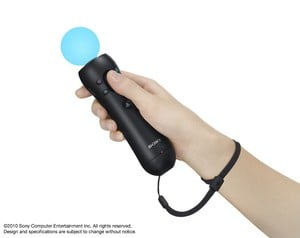
Digital Foundry, Eurogamer's crack team of technology experts, has been testing Move to see how it stacks up against other motion controllers. The result? A very positive write-up and plenty of fascinating history of the device, including some of the information we brought you in our recent Witness PlayStation Move's Origins on PlayStation 2 article.
From a technical and developmental point of view, PlayStation Move is very cool piece of kit. As a motion controller, its overall combination of precision, a fixed, low cost level of CPU and memory usage and the 60FPS camera feed makes it easily the most accurate, versatile and flexible interface available on console. There's little doubt that it can outperform the Wii Remote and MotionPlus, and while the scope for dance and fitness titles may not be in the same league as Kinect, it can still compete in this space, and it has far fewer technical limitations than Microsoft's sensor.
We already knew that the controller's accuracy was far in advance of the Wii's due to its usage of a tracking camera, but it's interesting to read about the low level of stress it puts on the processor and memory, meaning including Move support in games shouldn't result in a decrease in graphical quality or technical complexity. How you feel about the lower possibility for dance and fitness titles depends entirely on what kind of gamer you are, of course, but don't worry: you'll get your fair share.
For those unaware of Digital Foundry, it's a technical analysis blog headed up by industry legend Richard Leadbetter who regularly delves into the nitty gritty of consoles and associated technology. If you're into V-syncs, triple buffering and all the jargon you can eat, it's highly recommended. Check out the full Case for PlayStation Move on Digital Foundry for more information.
[source eurogamer.net]
Comments 3
Oh no, it won't be as good for dance and fitness titles as Kinect!
+1 for Move then really
@NES.... I think, and its just my opinion, but the upcoming Sorcery and All for One look amazing. Then Sports Championships and Eyepet as launch titles look all like great games worth having. I think the games will be there. Socom 4, Killzone 3, Mag, Heavy Rain, etc.
I think I'll be alright w/o dance/fitness titles, despite the fact that they're all I buy for my Wii..........
@NESGamepro - that response doesn't really help their marketing team.... If I ran a pizza place, asked what your favorite upcoming topping type was, and you said "I don't eat pizza for toppings--I like the dough"...I'd prob confusedly say "Uh...thanks man?" and call the next person.
Then I'd find a better analogy.
Tap here to load 3 comments
Leave A Comment
Hold on there, you need to login to post a comment...